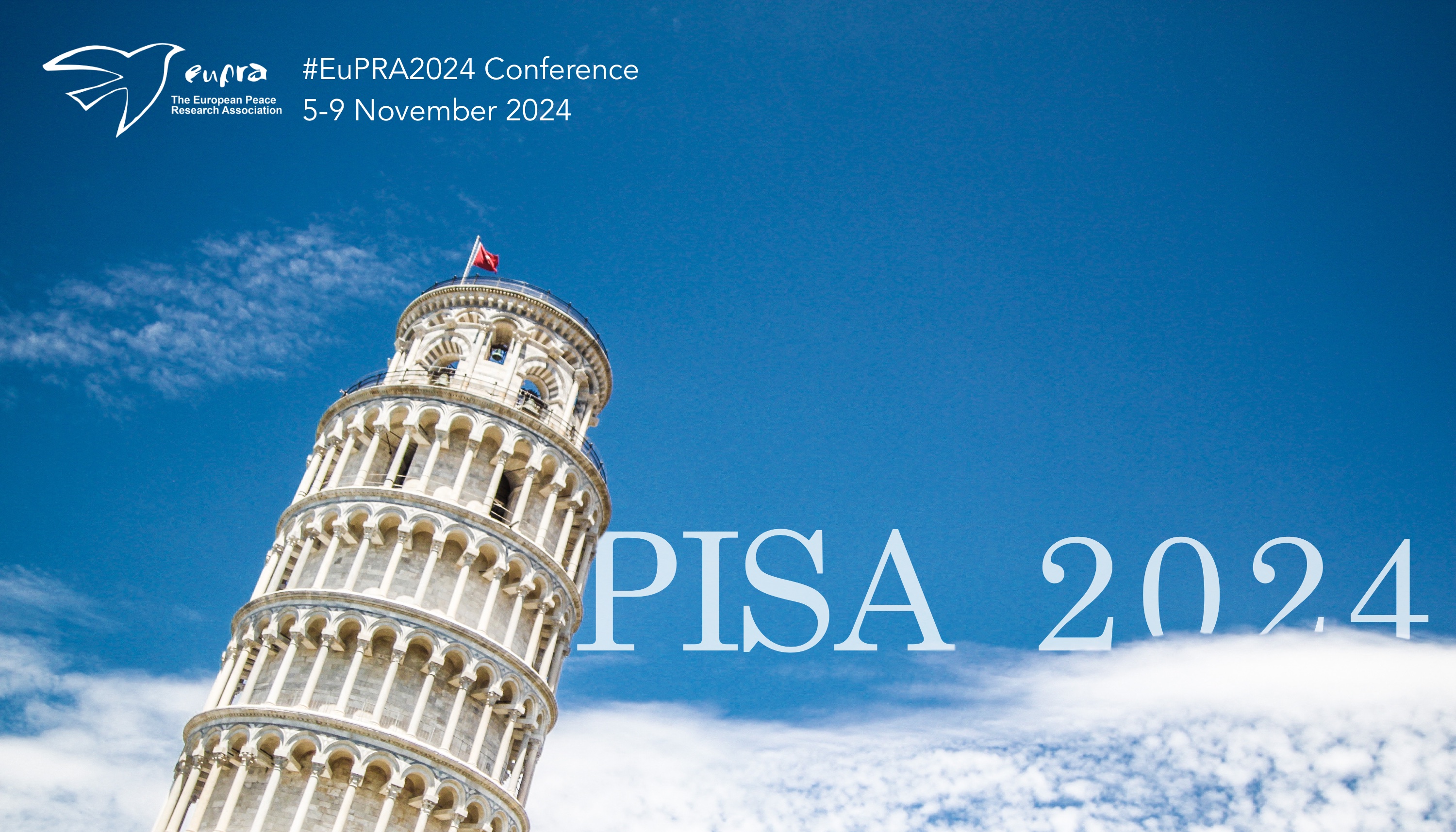Towards Utopias of Peace
Theories and Practices of Peace, Hope and Resistance in Troubled Times
Dates
Location
Introduction
Welcome to the main page for the EuPRA 2024 Conference in Pisa, Italy.
“PEACE CULTURES thrive on and are nourished by visions of how things might be, in a world where sharing and caring are part of the accepted lifeways for everyone. The very ability to imagine something different and better than what currently exists is critical for the possibility of social change.” (Elise Boulding in Cultures of Peace 2000, 29)
- We published the Call for Papers on 8 January 2024.
- Abstract submission has now been closed. We received close to 140 abstracts. Thank you.
- We are reviewed all submissions and sent emails informing you about the decisions after this process.
- The registration and payment form for the conference has been communicated. Registration ends 15 July 2024.
Closer to the conference, this page will provide the conference programme & abstracts.
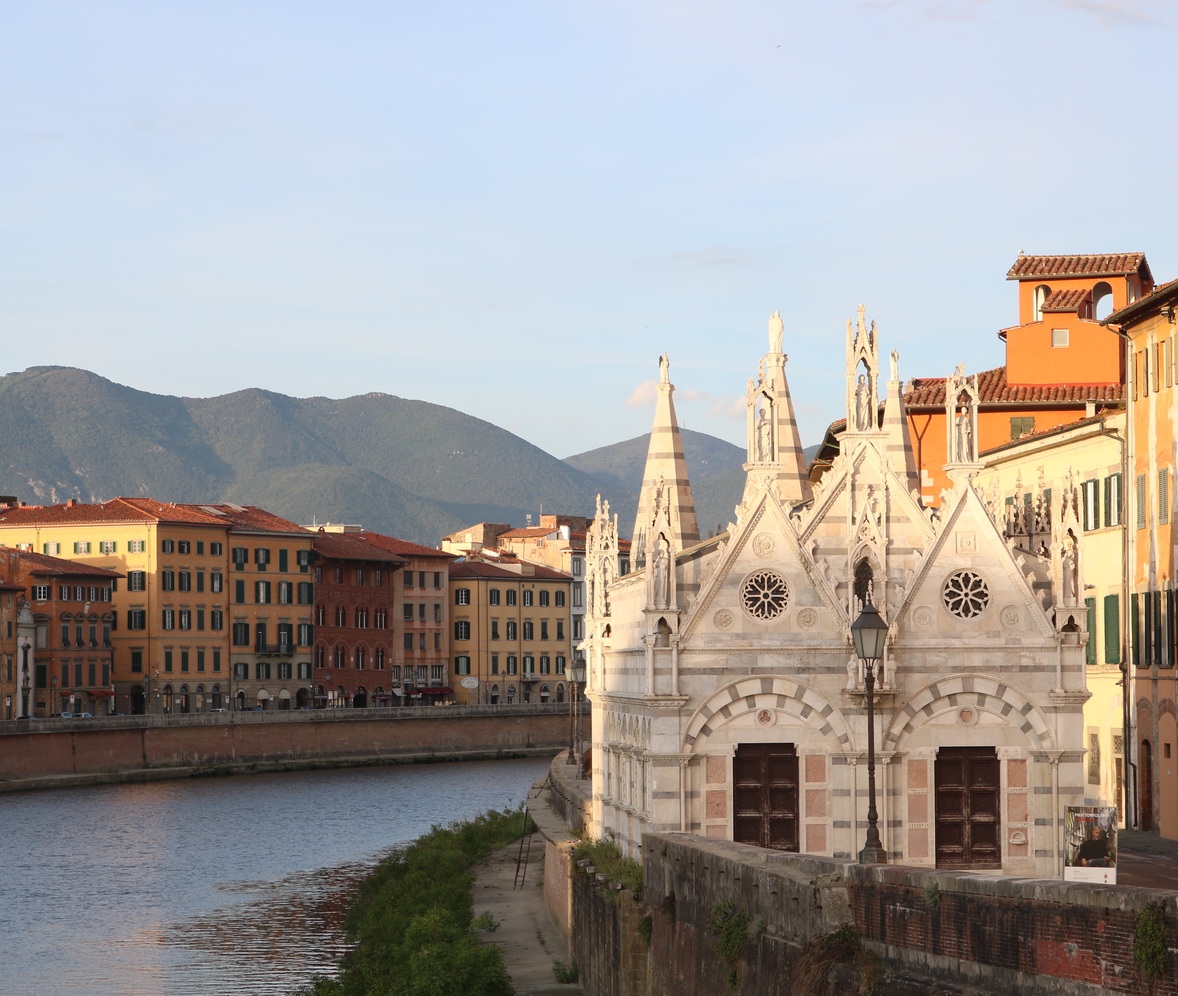
Travel grants
- https://applytelepart.com/about/ (from Finland to Italy)
- https://euraxess.ec.europa.eu/jobs/funding/travel-grants-program (Each quarter, Antibodies.com offers travel grants up to 500€ to help cover the cost of attending conferences.
These travel grants are open to PhD candidates, lab managers, and post-docs from academic research institutions across Europe)
Address
Centro Congressi Le Benedettine
Piazza S. Paolo a Ripa D’Arno, 16 PISA
In partnership with
 | 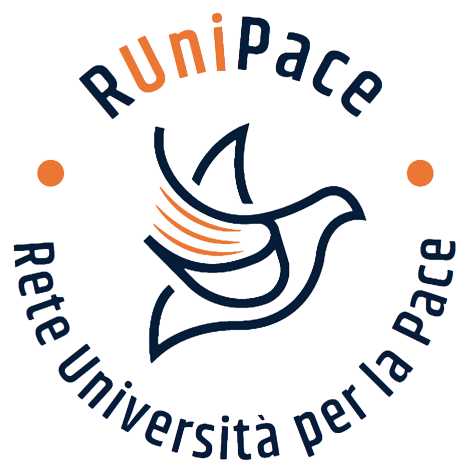 |  |
Safe Space
All EuPRA events are conducted within the frame of the EuPRA Safe Space rules. Attending this event means you agree with these rules.
Programme
The programme is open to last-minute changes. Please check the programme regularly. Updates to the programme will also be announced on BlueSky with the tag #EuPRA2024. We do not use X (ex-Twitter).
Last update: 2 November 2024 @ 12:05
 | To save paper, no copies of the programme or abstracts will be handed out at the conference. |
Jump to:
| 5 November 2024 | |
|---|---|
|
13:30 – 14:00 Registration desk (ground floor) |
REGISTRATION |
|
14:00 - 14:30 Auditorium (ground floor) |
OPENING STATEMENTSOpening statements by:
|
|
14:30 - 16:00 Auditorium (ground floor) |
OPENING ROUNDTABLEBetween Utopias and Dystopias: Peace Research in the 21st Century Chairs: Tarja Väyrynen and Ilaria Tucci, TAPRI
|
| 16:00 – 16:30 Catering area |
COFFEE BREAK |
|
16:30 – 18:00 Room Aldo Capitini (ground floor) |
YOUTH, PEACE AND SECURITYChair: Anush Petrosyan
|
|
16:30 – 18:00 Room Cynthia Enloe (ground floor) |
GEOGRAPHIES OF PEACEChair: Sina Jasmin Krämer
|
|
16:30 – 18:00 Room John Paul Lederach (first floor) |
WORKSHOPChair: Daniel Ruiz Lopez Can humanity survive the impendent environmental, resources and social policrisis? |
| 6 November 2024 | |
|---|---|
|
09:00 – 09:30 Registration desk (ground floor) |
REGISTRATION |
|
09:30 – 11:00 Auditorium (ground floor) |
KEYNOTEMalaka Shwaikh, University of St Andrews: “The Dangers of Resilience Expectations” |
| 11:00 – 11:15 Catering area |
COFFEE BREAK |
|
11:15 – 12:45 Auditorium (ground floor) |
ROUNDTABLEBeloved Community, Co-Liberation, and Decolonizing Palestine Solidarity Chair: Jess Notwell, King's University College at Western University
|
| 12:45 – 14:00 Catering area |
LUNCH BREAK |
|
14:00 - 15:30 Room Aldo Capitini (ground floor) |
GEOGRAPHIES OF PEACEChair: Angel Iglesias Ortiz
|
|
14:00 - 15:30 Room Cynthia Enloe (ground floor) |
PEACE NARRATIVES AND COLLECTIVE MEMORIESChair: Catia C. Confortini
|
|
14:00 - 15:30 Room Dorothy Day (ground floor) |
GENDERING SECURITY AT WARExamining Masculinities, Femininities, and Everyday Militarism Chair: Tarja Väyrynen
|
| 15:30 – 15:45 Catering area |
COFFEE BREAK |
|
15:45 - 17:15 Room Aldo Capitini (ground floor) |
ARTISTIC PRACTICES OF PEACEChair: Angel Iglesias Ortiz
|
|
15:45 - 17:15 Room Cynthia Enloe (ground floor) |
PEACE MEDIATION, PEACEBUILDING, AND DIALOGUEChair: Marko Lehti
|
|
15:45 - 17:15 Room Dorothy Day (ground floor) |
NONVIOLENCE AND RESISTANCEChair: Maria Teresa Muñoz
|
|
15:45 - 17:15 Room John Paul Lederach (first floor) |
DECOLONIZING PEACE - WORKSHOPCo-Liberation as Decolonizing Peace in the Classroom and with Community Chair: Jess Notwell |
|
17:30 – 18:30 Room Elise Boulding (ground floor) |
EuPRA General AssemblyBoard elections |
|
19:00 – 21:00 Restaurant Quore -Via del Cuori 1 |
Social eventSocial dinner at Ristorante Quore Located in the heart of Pisa's historic center, Ristorante Quore invites us to a special evening that combines gastronomy and solidarity. The project at Ristorante Quore thrives thanks to the work of individuals engaged in psychosocial rehabilitation programs. The ingredients are locally sourced, thanks to the Progetto Horta of horticultural therapy, and its ceramics workshop creates unique pieces that adorn the venue. By attending this dinner, you will be supporting a valuable cause while enjoying a culinary experience. The social event costs around 25 euros per person (not covered by the conference fee). |
| 7 November 2024 | |
|---|---|
|
09:00 – 09:30 Registration desk (ground floor) |
REGISTRATION |
|
09:30 – 11:00 Auditorium (ground floor) |
KEYNOTESevinj Samadzade, Ghent University - Beyond the Myths: Feminist Peace Imaginaries in Times of Perceived Crisis of Liberal Peace |
| 11:00 – 11:15 Catering area |
COFFEE BREAK |
|
11:15 – 12:45 Auditorium (ground floor) |
ROUNDTABLEInterdisciplinary Conversations on Gender, Violence, and Peace Chair: Catia Cecilia Confortini
|
| 12:45 – 14:00 Catering area |
LUNCH BREAK |
|
14:00 – 15:30 Room Cynthia Enloe (ground floor) |
WHOSE PEACE? WHOSE WAR?Rethinking Concepts and Approaches in Feminist Peace Research Chair: Leena Vastapuu
|
|
14:00 – 15:30 Room Aldo Capitini (ground floor) |
MATH & PEACEChair: Bram J. De Smet
|
|
14:00 – 15:30 Room Dorothy Day (ground floor) |
NEW CONCEPTUALISATIONS OF PEACE AND DECOLONIZING PEACEChairs: Jess Notwell
|
|
14:00 – 15:30 Room John Paul Lederach (first floor) |
WORKSHOPEmpowering the Next Generation of Peace Researchers: Building a Stronger Network for Global ChallengesChairs: Merel Selleslach & Anush Petrosyan In an era marked by escalating global crises, increasing violence, and the urgent threat of climate change, it is more important than ever to re-centre Peace Studies in addressing these complex international challenges. The PEACE (Peace Research Community in Europe) network is responding to this call by uniting scholars and institutions from across Europe to advance peace research and international collaboration. By addressing urgent topics such as the climate crisis, feminist peace, local peacebuilding, the impact of new technologies, and peace and security in Europe, the network aims to equip the next generation of scholars to tackle pressing global issues. This workshop will explore the critical role young researchers play in shaping the future of peace studies. We will examine how the PEACE network fosters research cooperation, knowledge exchange, and career development through initiatives like Summer Schools and mentorship programs. Join us to discuss the needs of early-career researchers and how the PEACE network can best support their growth in an evolving environment. |
| 15:30 – 15:45 Catering area |
COFFEE BREAK |
|
15:45 – 17:15 Room Cynthia Enloe (ground floor) |
UTOPIAS AND PEACEChair: Diana Marcela Agudelo Ortiz
|
|
15:45 – 17:15 Room Dorothy Day (ground floor) |
NONVIOLENCE AND RESISTANCEChair: Bram J. De Smet
|
|
15:45 – 17:15 Room Aldo Capitini (ground floor) |
PEACE PEDAGOGIESChair: Andreas Oberprantacher
|
|
15:45 – 17:15 Room John Paul Lederach (first floor) |
WORKSHOPFeminist Peace Research: And what about Elise? Chair: Draga Gajić |
|
19:00 – 21:00 Cinema Arsenale Vicolo Scaramucci, 2 |
Evening cultural programmeMovie Screening at Arsenale Cinema, film Tangerines (2013). 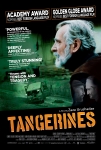 Directed by Zaza Urushadze, this acclaimed 2013 Estonian-Georgian film offers a profound reflection on war, hatred, and reconciliation. Set during the War in Abkhazia, Tangerines follows Ivo, an elderly Estonian who chooses to stay in his village to harvest tangerines despite the conflict. His life becomes intertwined with two wounded enemy soldiers whom he shelters in his home, forcing them to confront their differences under his roof. The film has received international recognition for its poignant message about humanity in times of war. |
| 8 November 2024 | |
|---|---|
|
09:30 – 11:00 Auditorium (ground floor) |
KEYNOTEValentina Baú, Institute for Culture and Society, Western Sydney University | Associate Researcher UNESCO Chair, Cultural Diversity and Social Justice: "Community Development and Peacebuilding: The Role of Communication in a Changing World" |
| 11:00 – 11:15 Catering area |
COFFEE BREAK |
|
11:15 – 12:45 Auditorium (ground floor) |
ROUNDTABLEOn the Legacy of Johan Galtung Chair: Bram J. De Smet
|
| 12:45 – 14:00 TBD |
LUNCH BREAK |
|
14:00 – 15:30 Room Cynthia Enloe (ground floor) |
FOOD, ENVIRONMENT AND JUST TRANSITIONSChair: Marjukka Laiho
|
|
14:00 – 15:30 Room Dorothy Day (ground floor) |
PEACE EDUCATIONChair: Andreas Oberprantacher
|
|
14:00 – 15:30 Room Aldo Capitini (ground floor) | PEACE MEDIATION, PEACEBUILDING and DIALOGUESChair: Leena Vastapuu
|
|
14:00 – 15:30 Room John Paul Lederach (first floor) |
WORKSHOPRecognizing our privileges and strive for allyship Chairs: Meeri Tiensuu and Ilaria Tucci |
| 15 :30 – 15 :45 Catering area |
COFFEE BREAK |
|
15 :45 – 17 :15 Room Cynthia Enloe (ground floor) |
PEACE, SECURITY, BORDERSChair: Unto Vesa
|
|
15 :45 – 17 :15 Room Dorothy Day (ground floor) |
PEACE MEDIATION, PEACEBUILDING AND DIALOGUESChair: Matt Meyer
|
|
15 :45 – 17 :15 Room Aldo Capitini (ground floor) |
FEMINIST PEACE PERSPECTIVESChair: Maria Teresa Muñoz
|
|
15 :45 – 17 :15 Room John Paul Lederach (first floor) |
WORKSHOPArts & Peace: Diversity and co-existence on stage Chairs: Ilaria Tucci and Silvia Manciati |
|
17:30 – 18 :15 Room John Paul Lederach (first floor) |
Cultural programmeAfter workshop performance |
| 9 November 2024 | |
|---|---|
| 09 :30 – 10 :00 Catering area |
Morning Coffee |
|
10:00 - 12:30 Auditorium (ground floor) |
CLOSING SESSIONSClosing Words of the Conference Future directions of peace research - the opportunities of COST Action - Peace Research Community Europe Chairs: Ilaria Tucci and TBD
|
|
12:30 – 14 :00 Palazzo Blu Lungarno Gambacorti, 9 |
Cultural programmeGuided tour of the Palazzo Blu: “From War to Liberation: Pisa 1940-1945” 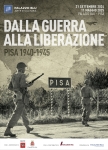 This tour at the Palazzo Blu takes us back to Pisa’s recent past during World War II, from the bombing of 1943 to its eventual liberation in 1944. The exhibition its a visual reflection on Pisa's resilience during one of the darkest moments in its history, curated by Prof. Gianluca Fulvetti, presents a unique selection of photographs and documents that depict the war in the city and its subsequent reconstruction, as well as the invaluable work of the “Monuments Men” in recovering damaged cultural heritage. |
Travel & Accomodation
Hotels list

- Royal Victoria Hotel
Lungarno Pacinotti, 12 – 56126 Pisa, Toscana
Tel. +39 050 940111
info@royalvictoria.it
https://www.royalvictoria.it
- Hotel Alessandro Della Spina
Via Alessandro Della Spina 5/7/9 - 56125 - Pisa
Tel. +39050502777 Fax +3905020583
info@hoteldellaspina.it
https://www.hoteldellaspina.it
- Grand Hotel Duomo
Via Santa Maria, 94 / 56126 - PISA
Tel. (+39) 050 561894 / 050 825088
info@grandhotelduomo.it
https://www.grandhotelduomopisa.it/
Double room (1 person) 80,00 euro per night, breakfast included
Double room (2 persons) 100,00 euro per night, breakfast included (+3,00 euro per person as municipality tax)
- Hotel Leonardo di Pisana Hotels Srl
Via Tavoleria, 17 56126 Pisa (PI)
+39 050 8667708
info@hotelleonardopisa.it
https://www.hotelleonardopisa.it/
Single room 85.00 euro per night, breakfast included;
Dus room 95.00 euro per night, breakfast included;
Double room 105.00 euro per night, breakfast included.
Leisure
Living the city
World-famous for its Leaning Tower and Piazza dei Miracoli, Pisa lies on the banks of the Arno and is only a few kilometres from the sea. The city has about one hundred thousand inhabitants, in addition to the tens of thousands of students who gravitate around the university every day. Characterised by its mild and gentle climate, Pisa is a student-friendly city. Here is some general information to help you experience it at its best.
Pisa Tourism: https://www.turismo.pisa.it/en/pisais/artandculture
What to do in Pisa?
Museums, art and monuments
Piazza dei Miracoli, also known as Piazza del Duomo, is a UNESCO World Heritage Site and is home to the Duomo of Santa Maria Assunta, the Baptistery of San Giovanni, the Camposanto Monumental Square and the famous Leaning Tower.
In Piazza dei Miracoli, you can visit the Museo dell'Opera del Duomo, which collects and preserves sculptures and architectural fragments from the buildings in the square, and the Museo delle Sinopie, which houses the large preparatory drawings found under the frescoes decorating the Camposanto.
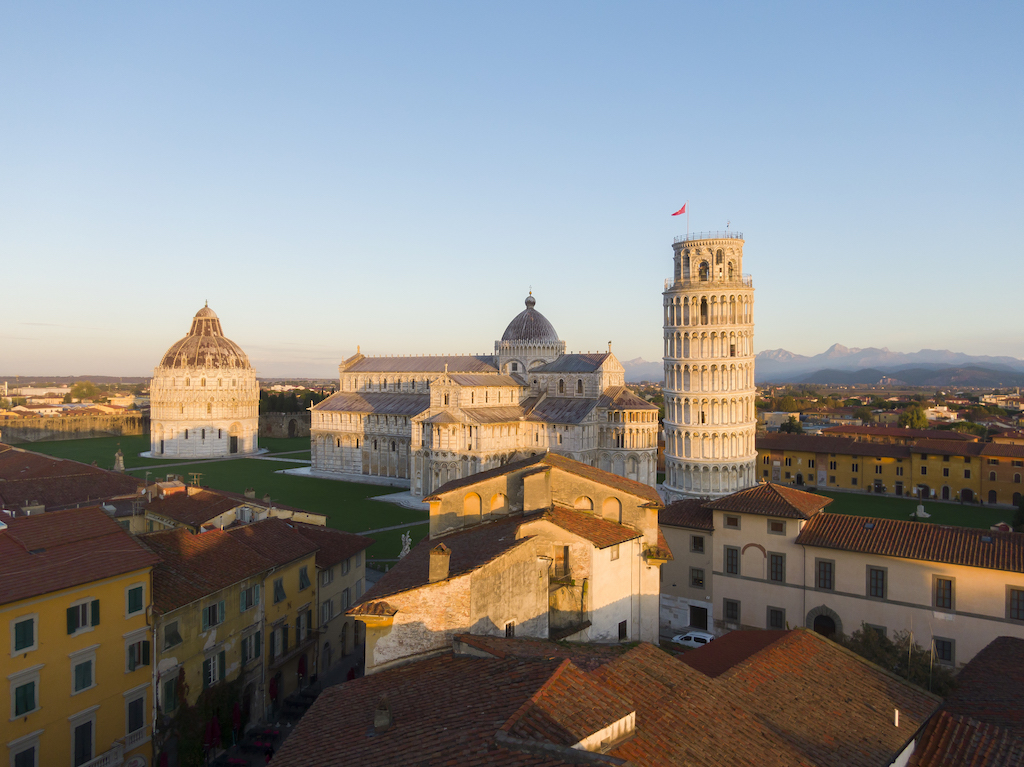
Among the most important museums is that of San Matteo, which houses the city's largest artistic collection and preserves a complete series of works by the main Pisan masters from the 12th to the 17th century, as well as archaeological and ceramic artefacts. Worthy of mention are the Museo della Grafica, which is one of the most important public collections of contemporary graphics, the Museo Nazionale di Palazzo Reale, home of the Medici seigniory in Pisa, and the Egyptological Collections of the Pisa University, which are now a point of reference for scholars and enthusiasts of archaeology and the history of ancient Egypt.
The churches reflect the immense artistic and cultural heritage of this city. Among the most characteristic are the Church of Santa Maria della Spina, built in perfect Gothic style and located on the left bank of the Arno; emblematic of the Pisan Romanesque style are the Church of San Sisto, built entirely in stone and a monument to the intense and complex relationship between Pisa and the Islamic world in the Middle Ages, and the Church of San Paolo a Ripa d'Arno, one of the oldest and known as the 'old cathedral'. A special mention goes to the Church of San Michele in Borgo, evidence of the transition from the Romanesque to the Gothic style evident in its façade.
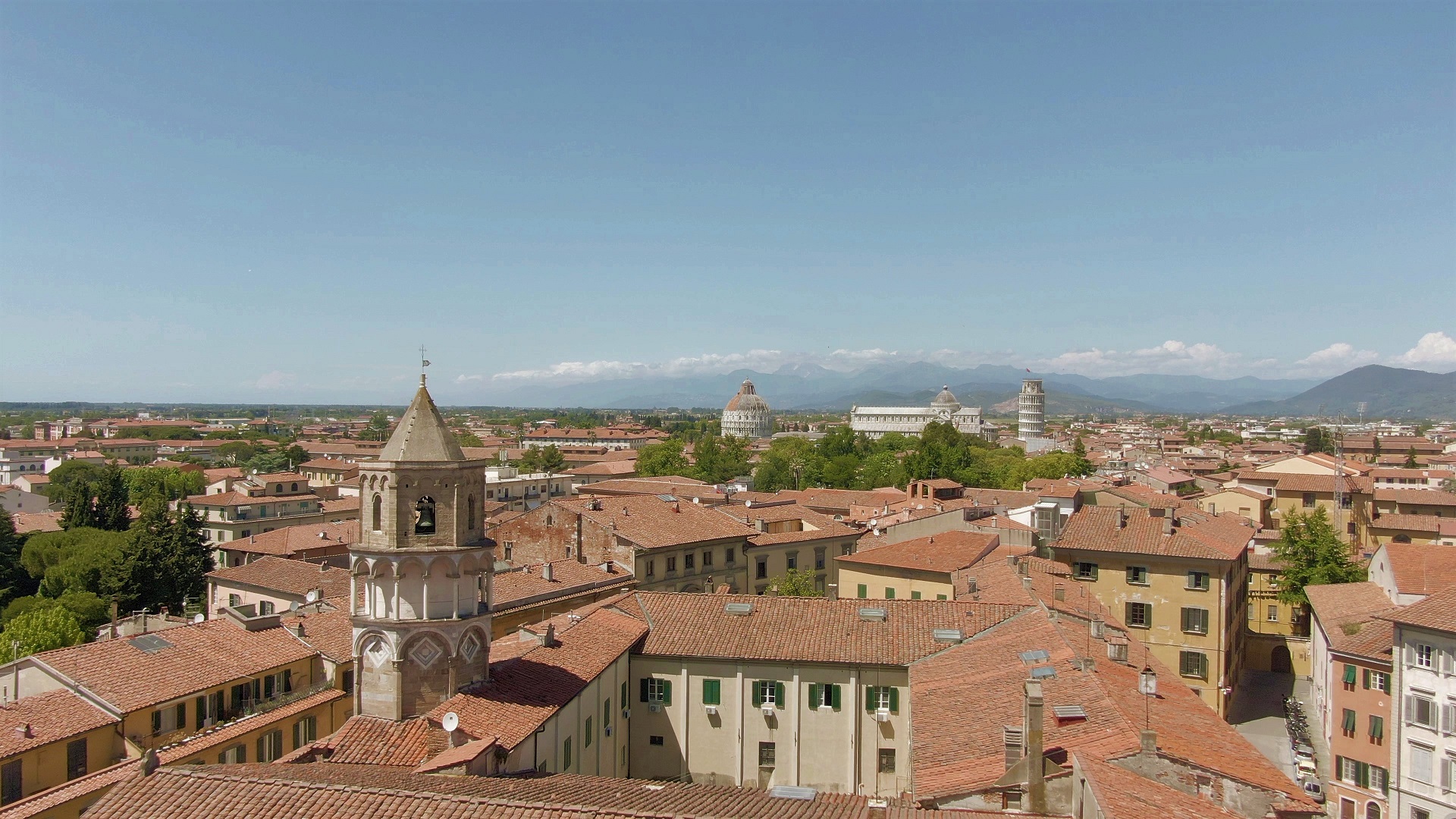
A stop not to be missed is the Palazzo Blu, located on the Lungarno Gambacorti. It is immediately recognisable by its characteristic blue facade. The building hosts very interesting, well-organised exhibitions: one section is dedicated to the permanent exhibition but the main feature are the numerous temporary exhibitions on different areas and topics.
Pisa is also home to Keith Haring's latest work, the Tuttomondo mural, a jewel of street art, the largest ever created in Europe. It is painted on the rear facade of the 'Servi di Maria' friars' convent in the church of S. Antonio. The church is located a few metres from the station, in an urban context in which the artist knew how to express himself at his best. This is not the only example: in Pisa there is one of the largest murals in Italy and it bears the signature of Kobra, who has portrayed one of the city's most symbolic characters, Galileo Galilei, intent on looking at the stars with a telescope in the shape of the Leaning Tower. The work is located in the Porta a Mare district.

Parks and natural attractions
For nature lovers, the Botanical Garden of Pisa, the oldest university botanical garden in the world, founded in 1543, is worth a visit. It is currently divided into seven areas, each of which houses one or more botanical collections: in total, there are about six thousand plants growing inside and they come from all five continents.
The Giardino Scotto, located on Lungarno Fibonacci, was an ancient fortress built by the Florentines in the 16th century and is now one of the city's most popular public parks. A corner where you can relax and read lying on the grass.
Viale delle Piagge is a long tree-lined street on the right bank of the Arno River and is flanked by a cycle path and a very attractive city park that runs along the entire street. It is the ideal place to meditate, stroll, run and breathe clean air. There are bars and picnic areas.
- Orto botanico https://www.ortomuseobot.sma.unipi.it/
- Piazza Duomo https://www.opapisa.it/
- Collezioni egittologiche https://www.egitto.sma.unipi.it/
- Museo della grafica https://museodellagrafica.sma.unipi.it/
- Palazzo Blu https://palazzoblu.it/
- Orto botanico https://palazzoblu.it/
- Parco San Rossore: https://www.parcosanrossore.org/
- Certosa di Calci e Museo: https://www.msn.unipi.it/it/la-certosa/
Where to eat in Pisa?
Pisan cuisine is traditional and linked above all to the territory and peasant culture. There are a number of restaurants, including 'trattorias' and osterias, where you can enjoy the city's typical dishes: Sant'omobono, Osteria i Santi, Osteria di Culegna, Vineria di Piazza, Osteria dei Mille, Osteria Micheletti, Trattoria da Stelio, Cantina Vasari, La Grotta and La Buca. For fish dishes where innovation and tradition meet, we recommend Branzo, not far from Piazza dei Cavalieri.
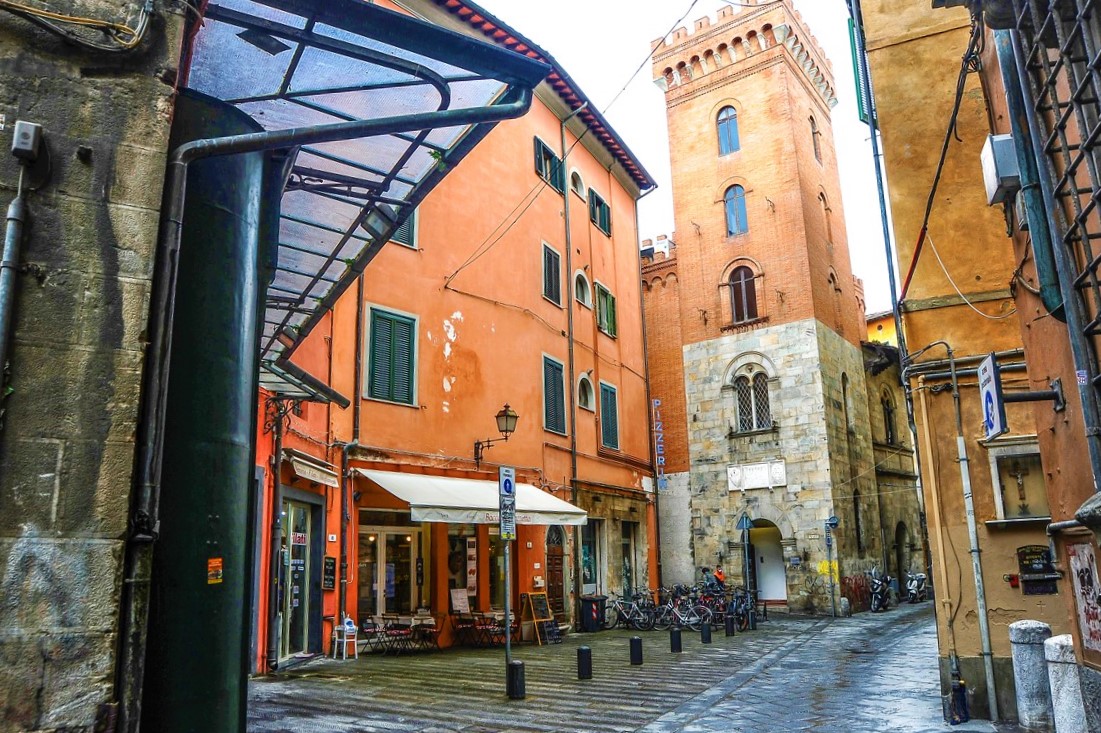
For international cuisine, one street in particular is worth a visit, Via San Martino, where you can sample the Greek cuisine of Makedonia, the Syrian-Lebanese cuisine of Al Madina and the Italian-ethnic dishes of Numeroundici; nearby, in Piazza della Pera, there are two Indian restaurants, Namastè and Tanduri.
For lovers of street food, there are two places we recommend: I Porci Comodi, with plates of cured meats, sandwiches and typical Tuscan specialities; l'Ostellino, which has a wide selection of sandwiches. Lastly, the city's historic pizzeria is definitely the Montino, famous for its 'cecina' (chickpea porridge) and Pisan-style pizzas and focaccia.
Restaurants
- Osteria i Santi https://www.osteria-isanti.com/it/
- Branzo https://branzo.it/
- Cantina Vasari https://www.cantinavasari.pisa.it/
- La Buca http://www.labucapisa.it/
- Osteria la Grotta https://www.osterialagrotta.com
- Trattoria da Stelio https://www.trattoriadastelio.it/
- Al Madina https://www.ristorantealmadina.it/
- Makedonia https://ristorantemakedonia.wordpress.com/
- Numeroundici https://www.numeroundici.it/
- Namastè https://www.namasteindiapisa.com/
- Tanduri https://www.tanduri.it/
Street Food
- I Porci Comodi: https://iporcicomodi.eatbu.com/?lang=it
- L’Ostellino: https://lostellino.eatbu.com/?lang=it
- Pizzeria Il Montino: https://www.pizzeriailmontino.it/
- Pub and Winery Pub Orzo Bruno: https://orzobruno.it/
- SUD Cantina: https://www.senzaunadirezione.it/
- Gramigna: https://gramignaristopub.eatbu.com/?lang=it
- Scaccomalto: https://muditabrewery.com/tap-room/
- Spaventapasseri: https://lospaventapasseripub.com/
- La Gallina Nera: https://gallina-nera-pisa.business.site/
- Il magazzino: https://www.vetrina.toscana.it/botteghe/il-magazzino/

What to do on a Friday night?
The main movida areas are the Pisan lungarnos with their famous 'spallette' (parapet) of the Arno river always crowded, especially at the weekend, where people sit and chat but... be careful not to fall in the water!
Landmarks of Pisan entertainment are also Piazza Garibaldi and Piazza Vettovaglie. Make a note of these tips: Ir Poncino, which offers excellent Livorno-style punch, bitters and grappa, and Baribaldi, ideal for an aperitif or a drink. In Piazza Vettovaglie, Deviribé and The Violin, where you can enjoy cocktails. Among the pubs and wineries, the most famous and popular are Orzo Bruno, which is the city's oldest craft brewery, and SUDPisa, where you can enjoy a fine selection of cold cuts and cheeses, wines and liqueurs. Other deserving pubs: Gramigna, Scaccomalto, Spaventapasseri, Magazzino; other quality wine bars: La Dolce Vite and La Gallina Nera. Among the city's most famous bars is La Tazza d'Oro, in Via San Martino.
So... if you don't want a drink, do you want to dance or listen to music? In Pisa there are two clubs in the city centre: we are talking about Lumiere, a live club that organises dozens of concerts by national and international artists every year. During the weekend, after the concerts, it hosts parties and DJ sets. The second club is Borderline, where you can listen to good music played live, from blues to jazz, fusion to rock, pop to metal. Other venues where you can drink and listen to good live music are Caracol and ExWide, the latter a reference point for jazz music lovers.
Disco and live music clubs
- Lumiere: https://www.lumierepisa.com/
- Borderline: https://www.borderlineclubpisa.it/circolo.php
- ExWide: https://exwide.com/chi-siamo/
- Caracol: http://www.caracolpisa.it/

Going out
City at the sea
Would you like to sunbathe or relax by the sea? Pisa is only 12 kilometres away from the beaches of Marina di Pisa and Tirrenia, where there is no shortage of excellent seaside places to stop for a drink in the evening.
Migliarino, San Rossore and Massacciucoli Park
Once a hunting reserve for the Medici family, it is now a protected natural area stretching some 32 km. In the park there are many paths - among sand dunes and pine forests - that can be travelled on foot and by bicycle, to which are added nature areas that are only accessible with an environmental guide. Excursions on horseback and guided tours by carriage are available on request. The park is home to numerous animal species, some at risk of extinction.
The Charterhouse of Calci
Surrounded by a surreal atmosphere of peace and tranquillity, the Charterhouse was founded in 1366 and is one of the most important Carthusian monasteries in Italy, ten kilometres from Pisa. It houses two distinct museums: the National Museum of the Monumental Charterhouse of Calci and the Museum of Natural History. The Charterhouse is also worth a visit for its extraordinary architecture, which is striking for its large size and the splendid natural setting in which it is located. Inside, it enchants with its frescoes, chapels, monumental cloister and guest quarters.
Trekking in the Monti Pisani
The Monti Pisani (Pisan Mountains) are rich in trails and itineraries of varying length and difficulty. Among the easiest is the Passo di Dante (Dante's pass): its appellation is due to its mention by Dante in the 33rd canto of the Divine Comedy. Then there is Mirteto attraverso la Valle delle Fonti (Myrtle through the valley of springs), which is very instructive on what was once man's relationship with the mountain (Mirteto); Salita al Castellare di San Giuliano Terme (Ascent of the Castle of San Giuliano Terme), one of the most historical and characteristic excursions where you can enjoy a spectacular view of the entire plain of Pisa. All routes are marked in white and red on hard surfaces (trees or rocks).

And for the little ones
Children visiting Pisa must be good explorers because the city has fantastic places for them to visit! The city preserves long medieval walls, parks, gardens, museums and much more.
The Walls of Pisa
The Walls of Pisa are the still existing part of the city's medieval walls and are currently 3 km long. The walk on the Walls offers a new view of Pisa, from which it is possible to admire Piazza dei Miracoli from above. These walls were built in the 12th century by the Pisans to defend themselves against their neighbours from Lucca and the imminent arrival of Frederick Barbarossa! A breath of the Middle Ages!
Parks and Playgrounds
Entering from the Lungarno Fibonacci in the Giardino Scotto there is a large playground with a well-equipped area. In the Parco delle Concette, enclosed between the Barbagianni bastion and the monastery of San Silvestro, you will find a large and quiet green space where children can play safely, away from traffic. If you look closely at the walls, you can see the remains of a breach opened by the Florentines in 1503. Can you see it?
Calci Museum and Livorno Aquarium
Definitely worth recommending is the Natural History Museum in Calci, only twenty minutes from Pisa, which contains ancient collections dating from the 16th century to recent palaeontological discoveries. You will find showcases with reptiles, mammals, birds, the cetacean gallery and ancient dinosaur stories! the museum contains the largest aquarium with freshwater fish in Italy.
The Livorno Aquarium is a voyage of discovery of the Mediterranean Sea with an aquarium trail reconstructing various marine environments and a space reserved to insects, amphibians and reptiles. The aquarium is located on Livorno's seafront, inside the Terrazza Mascagni.
Bakeries
There is no shortage of bakeries in Pisa where you can enjoy excellent desserts. To keep the little ones happy, just go to Cioccorocolato, specialising in cookies, macarons, meringues and muffins; Salza, a historic place in Borgo Stretto, where you can sample classic Piedmontese pastries; Le Petit, one of the city's most popular and one of the best-stocked. You can find great ice cream at La Bottega del Gelato in Piazza Garibaldi. The ice cream shop is open year-round.


